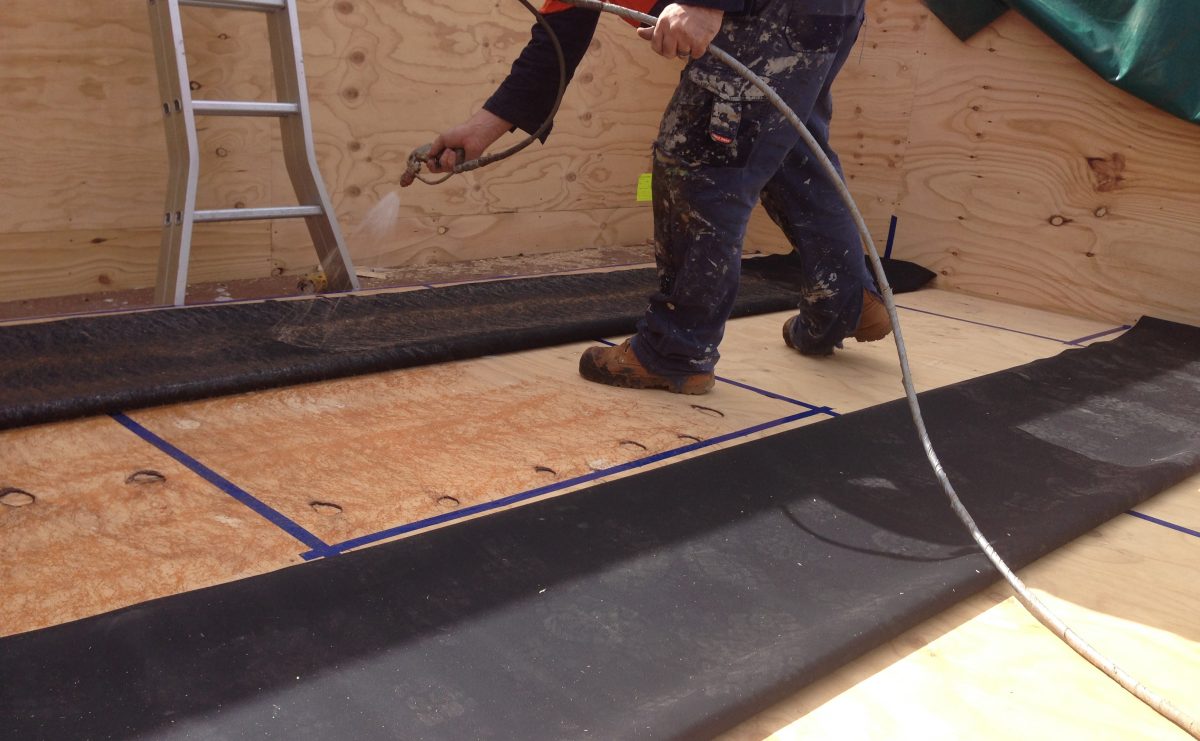Waterproofing Balcony: Your Key to a Safe, Dry Space
 Imagine this: you’re leaning on your balcony railing, enjoying a quiet evening, when you notice a damp spot underfoot. It’s subtle—just a dark patch on the wood—but it’s enough to make you wonder, “Is water sneaking in somewhere?” As a civil engineer who’s spent years poking around balconies, I can tell you that’s a red flag. Waterproofing a balcony isn’t just about keeping your feet dry—it’s about protecting the structure from rot, rust, and collapse. In California, where laws like SB326 and SB721 mandate balcony inspections, proper waterproofing is non-negotiable.Why’s it such a big deal? Balconies stick out from buildings, catching rain, snow, or even that overzealous sprinkler. Without a solid waterproofing system, water seeps into wood, corrodes metal, and turns a cozy perch into a safety hazard. I’ve seen it happen—hidden damage that could’ve been stopped with the right prep. Whether you’re a homeowner, condo owner, or property manager, understanding how to waterproof a balcony can save you headaches and cash. Let’s dive into why it matters, how it’s done, and what it means for SB326 inspections and SB721 inspections.
Imagine this: you’re leaning on your balcony railing, enjoying a quiet evening, when you notice a damp spot underfoot. It’s subtle—just a dark patch on the wood—but it’s enough to make you wonder, “Is water sneaking in somewhere?” As a civil engineer who’s spent years poking around balconies, I can tell you that’s a red flag. Waterproofing a balcony isn’t just about keeping your feet dry—it’s about protecting the structure from rot, rust, and collapse. In California, where laws like SB326 and SB721 mandate balcony inspections, proper waterproofing is non-negotiable.Why’s it such a big deal? Balconies stick out from buildings, catching rain, snow, or even that overzealous sprinkler. Without a solid waterproofing system, water seeps into wood, corrodes metal, and turns a cozy perch into a safety hazard. I’ve seen it happen—hidden damage that could’ve been stopped with the right prep. Whether you’re a homeowner, condo owner, or property manager, understanding how to waterproof a balcony can save you headaches and cash. Let’s dive into why it matters, how it’s done, and what it means for SB326 inspections and SB721 inspections.Why Waterproofing Your Balcony Is a Game-Changer
Think of water as a silent ninja—it slips in quietly, then wreaks havoc. On a balcony, it’s the top enemy. Exposed to the elements, balconies take a beating from rain, UV rays, and wind. If water gets past the surface—say, through a crack or a poorly sealed edge—it soaks into joists, rusts steel anchors, or pools under tiles. Over time, that leads to rot, mold, or worse: structural failure. The 2015 Berkeley balcony collapse, where six lives were lost, traced back to dry rot from water damage. That’s why waterproofing isn’t optional—it’s a lifeline.In California, SB326 (for condos) and SB721 (for apartments) zero in on this. These laws require balcony inspections every 6 or 9 years to catch water-related issues before they escalate. I’ve inspected balconies where soggy wood crumbled in my hands—damage that started with a tiny leak. Waterproofing stops that ninja in its tracks, protecting not just the balcony but the building below it. It’s about safety, sure, but also peace of mind. Who wants to sip coffee wondering if the floor’s about to give?How Does Balcony Waterproofing Work?
So, how do you keep water out? It’s not magic—it’s engineering. Waterproofing a balcony means creating a barrier that stops water from sneaking into the structure. Picture a raincoat for your balcony: tough, seamless, and sloped to shed water fast. The process starts with the substrate—usually concrete or wood—then layers up with membranes, sealants, or coatings. I’ve worked on jobs where we stripped a balcony down to its bones to do it right. Here’s the playbook:- Surface Prep: Clean and level the base. Cracks or dips trap water—fix them first.
- Membrane Layer: Roll on a liquid membrane (like polyurethane) or lay a sheet (like PVC). This is the heart of the system.
- Flashing: Metal or rubber strips seal edges where the balcony meets the building—leaks love those spots.
- Drainage: Slope the surface (at least 1/4 inch per foot) so water runs off, not in.
- Topcoat: Tiles, wood, or a coating go over the membrane for looks and extra protection.
Types of Waterproofing Systems for Balconies
Not all balconies are the same, so neither are the waterproofing options. Picking the right one depends on your setup—wood or concrete, new build or retrofit. Here’s what I’ve used on the job:- Liquid Membranes: Brush or roll on, great for odd shapes. Tough but needs a steady hand.
- Sheet Membranes: Pre-made rolls (like TPO or EPDM) that glue or torch down. Fast but less flexible.
- Cementitious Coatings: Mix with water, apply like paint. Good for concrete, less so for wood.
- Bitumen: Tar-like and sticky, old-school but effective under heavy-duty surfaces.
| System | Pros | Cons |
|---|---|---|
| Liquid Membrane | Seamless, flexible | Slow to apply, pricey |
| Sheet Membrane | Quick install, durable | Hard to fit curves |
| Cementitious Coating | Cheap, easy to use | Cracks under movement |
| Bitumen | Super waterproof | Messy, needs a top layer |
The Role of Waterproofing in SB326 and SB721 Compliance
Here’s where the law steps in. SB326 inspections (for condos) and SB721 inspections (for apartments) aren’t just about spotting cracks—they’re hunting for water damage. Inspectors like me check waterproofing systems closely: Is the membrane intact? Is flashing rusted? Is water pooling? If your balcony’s over six feet off the ground, it’s under scrutiny. SB326 demands a stamped report from an engineer or architect every 9 years; SB721 wants checks every 6 years, sometimes by contractors too.Fail these inspections, and you’re on the clock—repairs often need to start within months. I’ve seen balconies flagged for peeling membranes or missing slopes—fixable, but costly if ignored. Good waterproofing upfront makes balcony inspection day a breeze. Skip it, and you’re rolling the dice on fines or worse.Contact DrBalcony for a professional inspection!Ensure the safety of your balcony and living space with DrBalcony – We’re a Tech Engineering firm that specializes in California SB326 & SB721 balcony inspections. Over 300+ completed projects in California.Contact DrBalcony For A Professional Inspection!
Ensure the safety of your balcony and living space with DrBalcony – We're a Tech Engineering firm that specializes in California SB326 & SB721 balcony inspections. Over 300+ completed projects in California.
Common Waterproofing Mistakes to Avoid
Even pros mess this up sometimes. I’ve walked onto balconies where shortcuts caused chaos. Here’s what to dodge:- No Slope: Flat surfaces pool water—every balcony needs a tilt.
- Cheap Materials: Bargain membranes crack fast; spend on quality.
- Skipped Flashing: Unsealed edges are leak magnets.
- Poor Maintenance: Dirt or cracks undo waterproofing—clean it yearly.
How to Maintain Your Waterproofed Balcony
Waterproofing isn’t set-it-and-forget-it. Keep it working with simple upkeep:- Sweep off leaves and dirt—debris traps moisture.
- Check drains—clogs kill the slope’s magic.
- Look for cracks or peeling—patch small issues fast.
- Reseal every 5-10 years, depending on wear.
